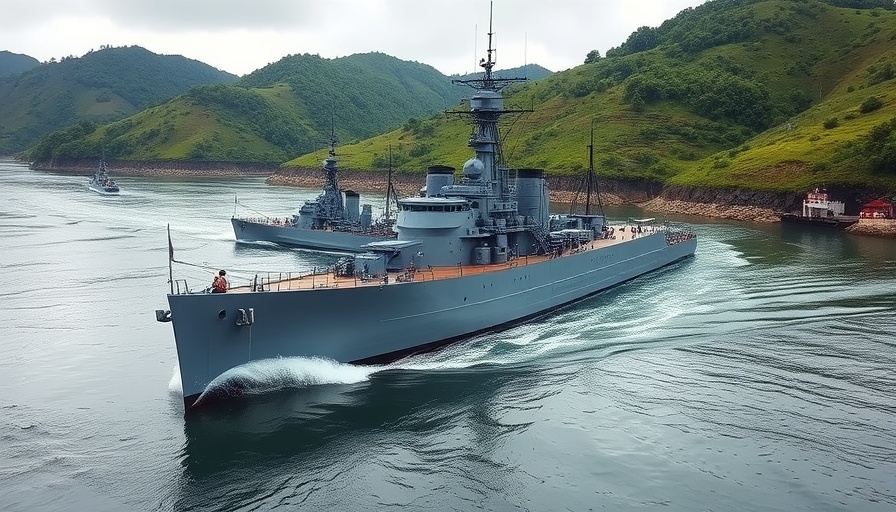
The Untold Story of Montana-Class Battleships
In an era when battleships epitomized naval power, the Montana-class battleships emerged as a fascinating chapter in American military history. Conceived amidst the roaring ambitions of naval warfare, these massive vessels were intended to be the giants of the U.S. fleet. However, their story highlights a critical turning point as military technology and strategy rapidly evolved.
Historical Context: The Battleship Era
Before World War II, the world's naval powers were engaged in a fierce competition to build bigger and more formidable battleships. The Montana-class was envisioned as America's response to this arms race, designed under the auspices of the 1940 Two-Ocean Navy Act. The original plan included five ships, symbolizing not just power, but a significant investment in the U.S. Navy's future.
Size and Firepower: The Colossal Dimensions
Weighing over 70,000 tons, the Montana-class battleships were designed to be larger than their predecessors, the Iowa-class ships. At 921 feet long and equipped with impressive twelve 16-inch guns, these ships promised to deliver 25% more firepower than the Iowas. They were equipped for modern Naval warfare, with a secondary battery of 20 dual-purpose 5-inch guns to counter aerial threats, displaying an understanding of the changing nature of naval engagement.
Why They Never Set Sail: The Shifting Winds of Warfare
The Montana-class battleships symbolize a significant naval evolution that began during the early years of World War II. As aircraft carriers gained prominence, highlighting the vulnerability of even the most armored battleships during events like the Pearl Harbor attack, the Montanas were rendered obsolete. The shift towards air power demonstrated that the era of the battleship was waning, making these colossal ships unnecessary.
Lessons Learned: Strategic Shifts in Military Planning
The transition from an era dominated by battleships to one led by aircraft carriers called for reevaluation of military priorities. This historical reflection reveals how swiftly military paradigms can shift, rendering enormous projects like the Montana-class battleships impractical. Decision-makers in Kansas City can take note of this lesson: in business and strategy, flexibility is key. Just as the Navy adapted, local businesses must respond swiftly to evolving market demands.
The Local Impact: Kansas City’s Role in Military History
While Kansas City may not directly correlate with naval construction, the local economy and communities thrive when they learn from past events. Recognizing the importance of adaptability and resilience can lead to more robust local businesses. Kansas City businesses can take inspiration from naval history’s adaptability, ensuring they remain relevant and competitive in today’s landscape.
Embracing Change: A Call to Local Businesses
The story of the Montana-class battleships serves as a compelling reminder of the need to adapt and innovate. Local health and wellness businesses in Kansas City can benefit from this narrative by offering services that cater to changing consumer preferences. By investing in holistic health and wellness solutions, KC businesses can lead the way in providing comprehensive support for their communities.
Conclusion: Share Your Story
The Montana-class battleships might not sail, but their legacy inspires innovation and adaptability. It’s essential to learn from the past and evolve with the times. Do you have a story to share about your business's evolution or insights into Kansas City's health and wellness landscape? Reach out and connect with us via email at team@kansascitythrive.com. Share your thoughts and be part of Kansas City’s inspiring narrative!
 Add Row
Add Row  Add
Add 





Write A Comment